The earliest sleeping pads I had for camping, back in the 1960s, were 3⁄8″ sheets of closed-cell foam. In the early ’70s I switched to the first self-inflating pad which was only three-quarter length but was easily a full 1″ thick and a great improvement in comfort. Since then, I’ve been drawn to longer, wider, and thicker pads and I am now more comfortable sleeping at anchor than I am at home.
These luxurious sleeping pads are also self-inflating, but it takes a long time for the foam inside to expand and draw air in through the intake valve. The earliest self-inflating pads had to be topped off by blowing into them, but the moisture that method introduced could damage the air-proof coating on the inside surface of the fabric. My two newest pads avoid that with pumps that are included. One of the pads has a small palm-sized fabric hand pump, good for topping off, and the other has an open-ended roll-top inflation bag to speed filling.
While the comfort of my largest sleeping pads has been well worth the time it takes to inflate them, I took a chance on buying two compact electric pumps with internal rechargeable batteries. Both are rated IPX4 (splashproof) and include five adapter nozzles and LED area lights.
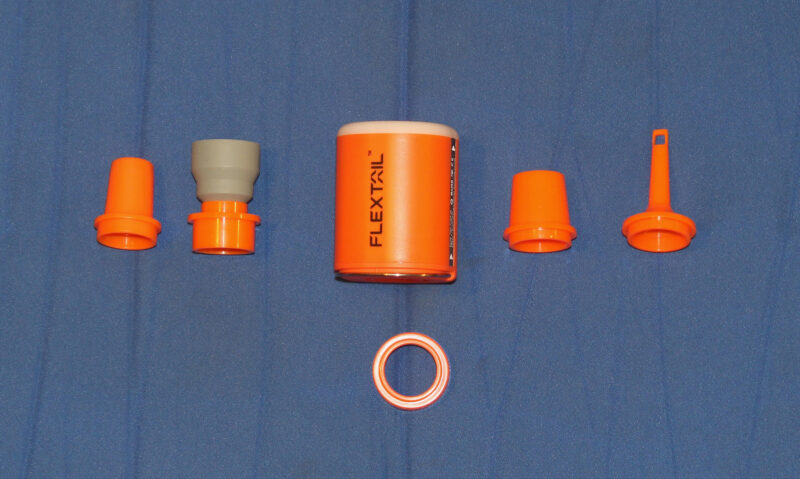 Photographs by the author
Photographs by the authorThe Flextail Tiny Pump 2X has five fittings to connect to common inflatable devices. The pump kit includes a type-C charging cable and a storage bag.
Flextail’s Tiny Pump 2X is the smaller of the two products. It is powered by a USB rechargeable 1,300mAh battery and pushes air at 6.4 cu ft per minute with peak pressure of 0.58 lb per square inch. The light has three settings: 40, 160, and 400 lumens. A magnet can hold the Flextail to a steel surface, which can be handy. When the pump is turned on, it emits a shrill 90-decibel whine.
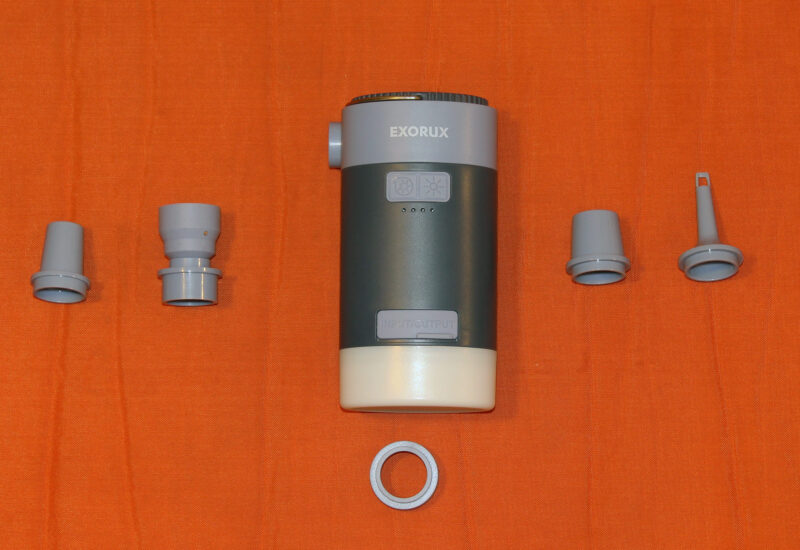
The Exorux 3-in-1 Solar Portable Air Pump has the same five adapters. The included type-C cable is used to charge the pump and to charge other devices from the pump‘s battery. A row of four lights indicates the charge level.
The 3-in-1 Solar Portable Air Pump from Exorux is powered by a 4,000mAh battery and delivers air at 10.6 cu ft per minute with a peak pressure 0.65 lb per square inch. Its light has settings for 50, 100, and 150 lumens, and also registers around 90 decibels while pumping. The Exorux pump, however, has a few extra features that the Flextail lacks.

The back side of the Exorux has 0.3-watt microcrystalline solar panel for charging its battery.
While both pumps have USB ports for charging themselves, the Exorux has a 0.3W monocrystalline solar panel on one side for recharging itself in daylight as well as a USB 2A “emergency charger.” The fully charged Exorux recharged my Android smartphone from 16 percent to 79 percent in 2 1⁄4 hours, then stopped charging, good enough for an emergency.
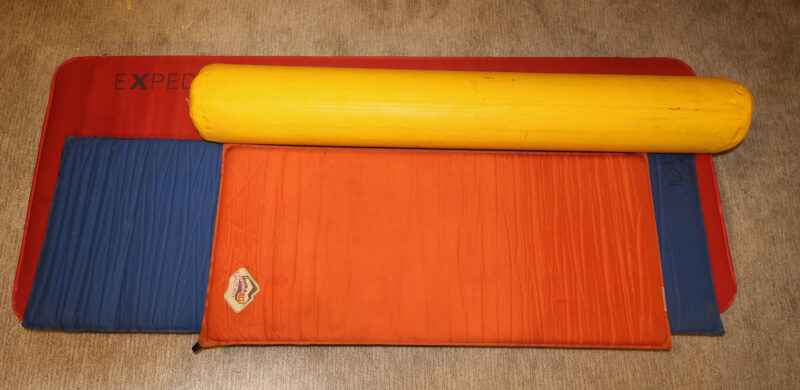
I bought the compact pumps for inflating three of my sleeping pads and a pair of beach rollers.
I put the pumps to work inflating three of my sleeping pads: the old three-quarter-length Therm-a-Rest at 48″ × 20″ × 1 1⁄2″, a full-length Therm-a-Rest measuring 72″ × 20″ × 1 1⁄2″, and a luxurious Exped Megamat at 78″ × 31″ × 4″.
I inflated and deflated the mats with each pump and noted the time it took for the pump to rise in pitch, signaling that it was at its maximum pressure.
The Flextail pump inflated the smallest of the three mats in 20 seconds and deflated it in 20 seconds. The larger Therm-a-Rest took about 40 seconds to inflate and 30 seconds to deflate, and the Megamat inflated in 2 1⁄2 minutes, deflated in 3 minutes.
The larger and more powerful Exorux pump inflated the small Therm-a-Rest pad in 18 seconds and deflated it in 30; it inflated the large Therm-a-Rest in 40 seconds and deflated it in 30. While the times for the two pumps on the Therm-a-Rest pads don’t set the Flextail and Exorux apart, the Exorux achieved higher pressure inflating and greater compression of the pad when deflating.
The Exorux inflated the Megamat in 1 minute and deflated it in 2 minutes. The Megamat, a base-camp sleeping pad, is normally left unrolled for 15 to 20 minutes to self-inflate before getting topped off with the small hand pump. The Flextail and the Exorux hasten the process without creating excessive pressure that could damage any sleeping pad.
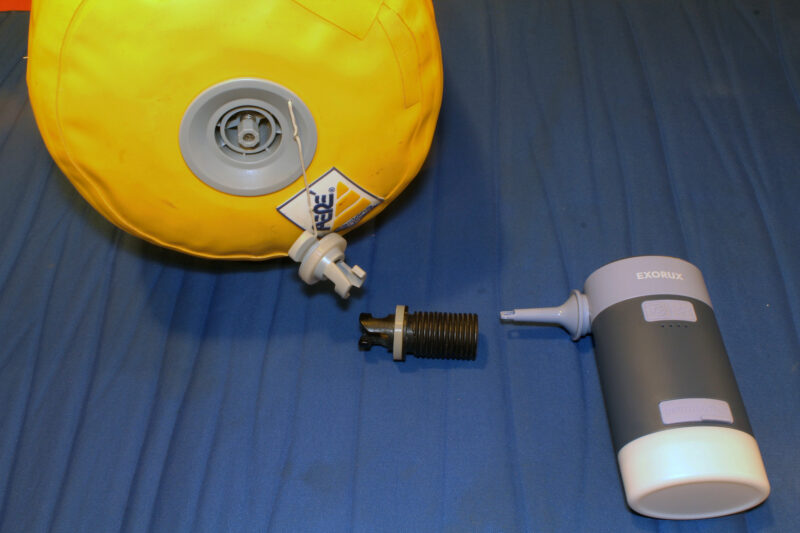
Inflating the beach roller requires the end fitting and a short section of the hose taken from the manual pump usually used to inflate the roller. The slender adapter supplied with either compact pump fits tight against the corrugated hose and its long tip depresses the roller spring-loaded valve.
One of the other tasks I had for these compact pumps was inflating my Aeré Beach Rollers. The rollers are exceptionally handy for moving a boat across a beach and, when strapped under side benches, can provide flotation in the event of a swamping. The hand pumps ordinarily used to inflate the rollers are bulky and take up almost as much space as a pair of rollers deflated and rolled-up to be stowed.
The Aeré valves are spring-loaded and neither of the battery-powered pumps produces enough pressure to open them. I inflated a roller with its valve in the open position, but I couldn’t remove the pump and close the valve fast enough to prevent the roller from losing about half its air. The solution was to use the hand pump’s valve fitting with a 1 1⁄4″ length of its ribbed hose attached, and the slender toy nozzle fixed to either of the compact electric pumps. To reach the valve, the nozzle will have to be pushed tight against the end of the hose, compressing it to create a tight seal. Inside the hose, the end of the nozzle depresses the valve stem, opening the valve. After the roller is filled with air, the nozzle can be removed and the valve will close, blocking air from escaping. (The hand-pump that provided the length of hose can easily be restored to its normal use by inserting the valve fitting into the end of its remaining hose.)
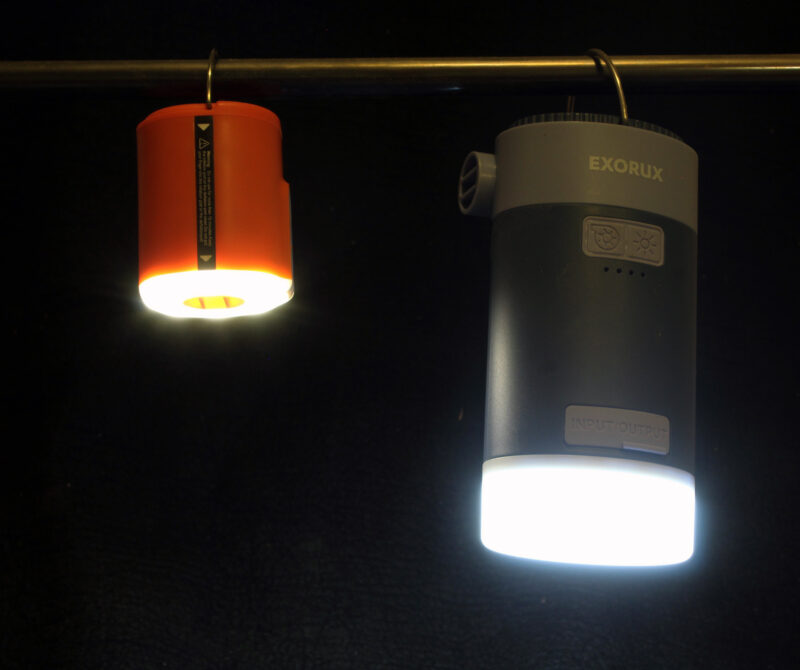
The Flextail and the Exorux have folding bails and LED area lights with three settings.
Both of these compact pumps can also be used to help start campfires. The steady, forceful flow of air they provide can get a good conflagration of twigs going without the faceful of smoke that is common when using your lungs as a blower.
The Tiny Pump 2X from Flextail and the 3-in-1 Solar Portable Air Pump from Exorux can both make themselves useful for camp-cruising and do much more than a hand pump can while taking up much less space.![]()
Christopher Cunningham is editor of Small Boats.
The Tiny Pump 2X is available from Flextail for $39.99. The 3-in-1 Solar Portable Air Pump from Exorux is sold through Amazon for $29.
Is there a product that might be useful for boatbuilding, cruising, or shore-side camping that you’d like us to review? Please email your suggestions.

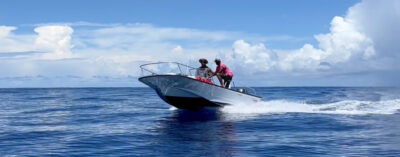
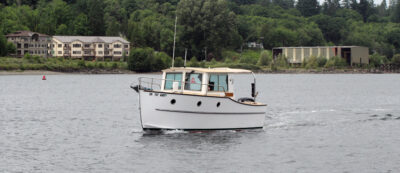
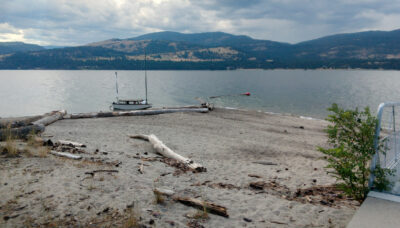
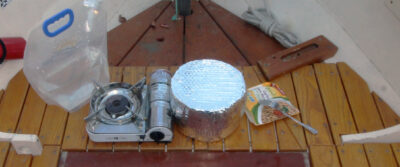
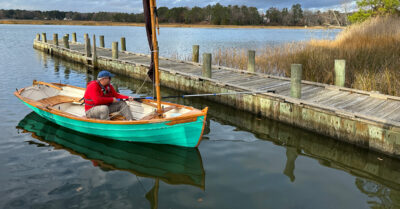
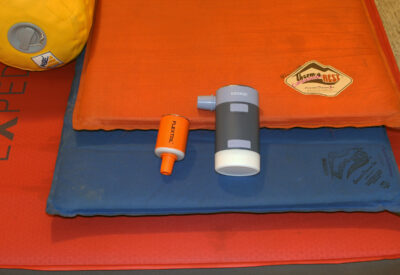

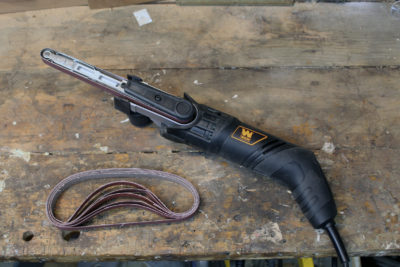
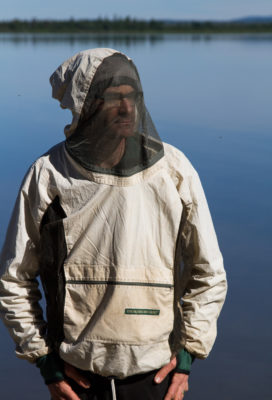
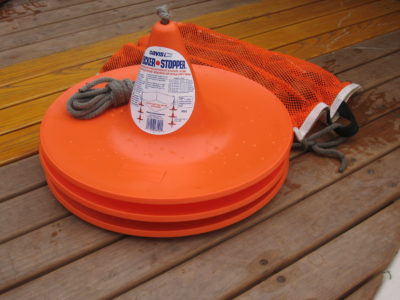
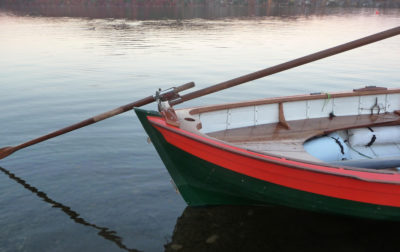
Join The Conversation
We welcome your comments about this article. If you’d like to include a photo or a video with your comment, please email the file or link.